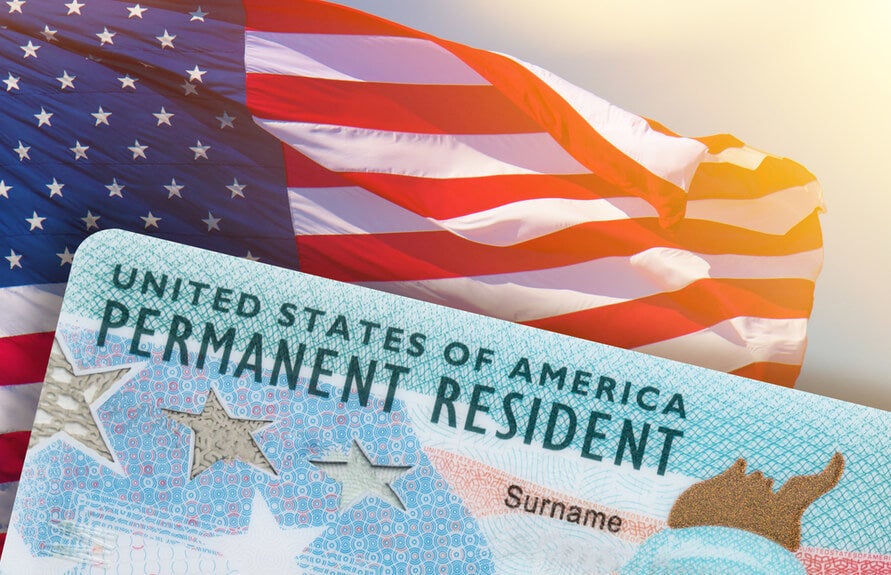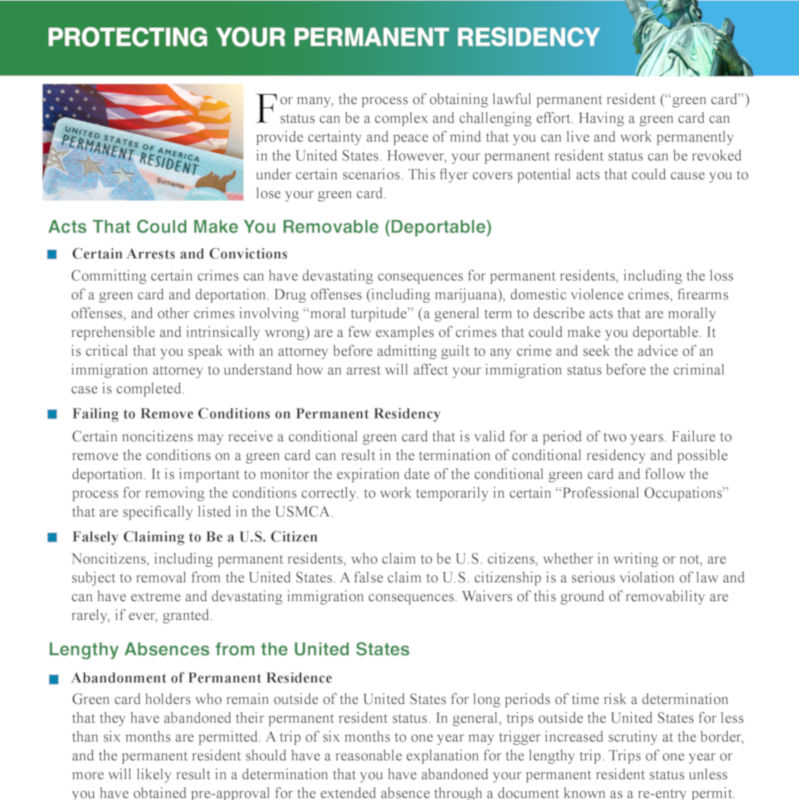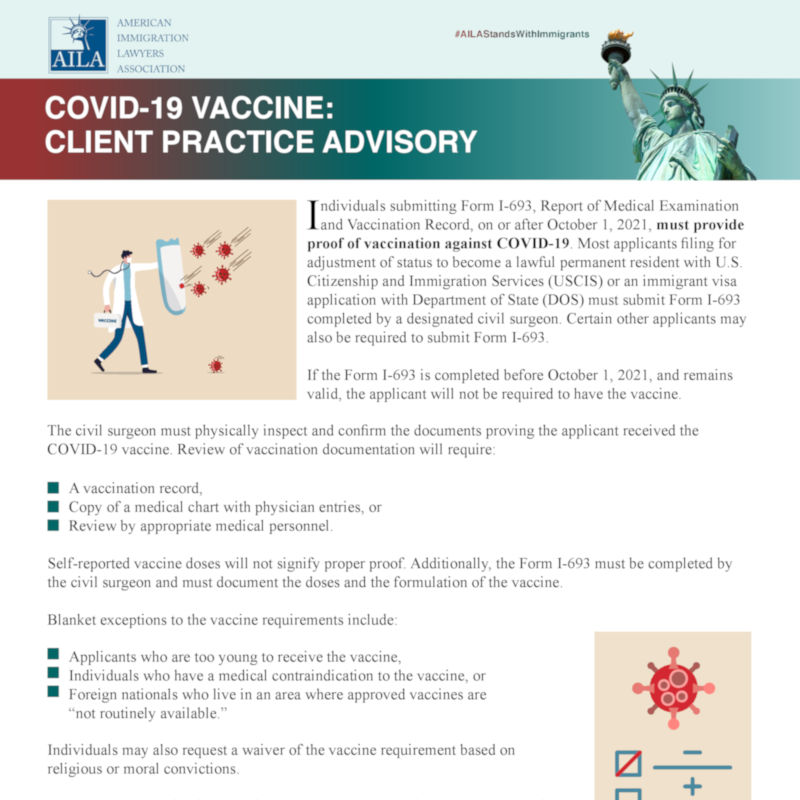Protecting Your Permanent Residency
Protecting your permanent residency is important. For many, the process of obtaining lawful permanent resident (“green card”) status can be a complex and challenging effort. Having a green card can provide certainty and peace of mind that you can live and work permanently in the United States. However, your permanent resident status can be revoked under certain scenarios. There are potential acts that could cause you to lose your green card.
Acts That Could Make You Removable (Deportable)
- Certain Arrests and Convictions
Committing certain crimes can have devastating consequences for permanent residents, including the loss of a green card and deportation. Drug offenses (including marijuana), domestic violence crimes, firearms offenses, and other crimes involving “moral turpitude” (a general term to describe acts that are morally reprehensible and intrinsically wrong) are a few examples of crimes that could make you deportable. It is critical that you speak with an attorney before admitting guilt to any crime. And you should seek the advice of an immigration attorney to understand how an arrest will affect your immigration status before the criminal case is completed. - Failing To Remove Conditions on Permanent Residency
Certain noncitizens may receive a conditional green card that is valid for a period of two years. Failure to remove the conditions on a green card can result in the termination of conditional residency and possible deportation. Therefore, it is important to monitor the expiration date of the conditional green card. And you should follow the process for removing the conditions correctly. - Falsely Claiming To Be A U.S. Citizen
Noncitizens, including permanent residents, who claim to be U.S. citizens, whether in writing or not, are subject to removal from the United States. A false claim to U.S. citizenship is a serious violation of law and can have extreme and devastating immigration consequences. Waivers of this ground of removability are rarely, if ever, granted.
Lengthy Absence From the United States
- Abandonment of Permanent Residence
Green card holders who remain outside of the United States for long periods of time risk a determination that they have abandoned their permanent resident status. In general, trips outside the United States for less than six months are permitted. A trip of six months to one year may trigger increased scrutiny at the border, and the permanent resident should have a reasonable explanation for the lengthy trip. Trips of one year or more will likely result in a determination that you have abandoned your permanent resident status unless you have obtained pre-approval for the extended absence through a document known as a re-entry permit.
Questions About Protecting Your Permanent Residency Status?
Looking for assistance removing conditions on your Green Card? Planning to be outside the United States for more than six months? For help with protecting your permanent residency status, request a free immigration consultation with immigration attorney Jessie M. Thomas.





